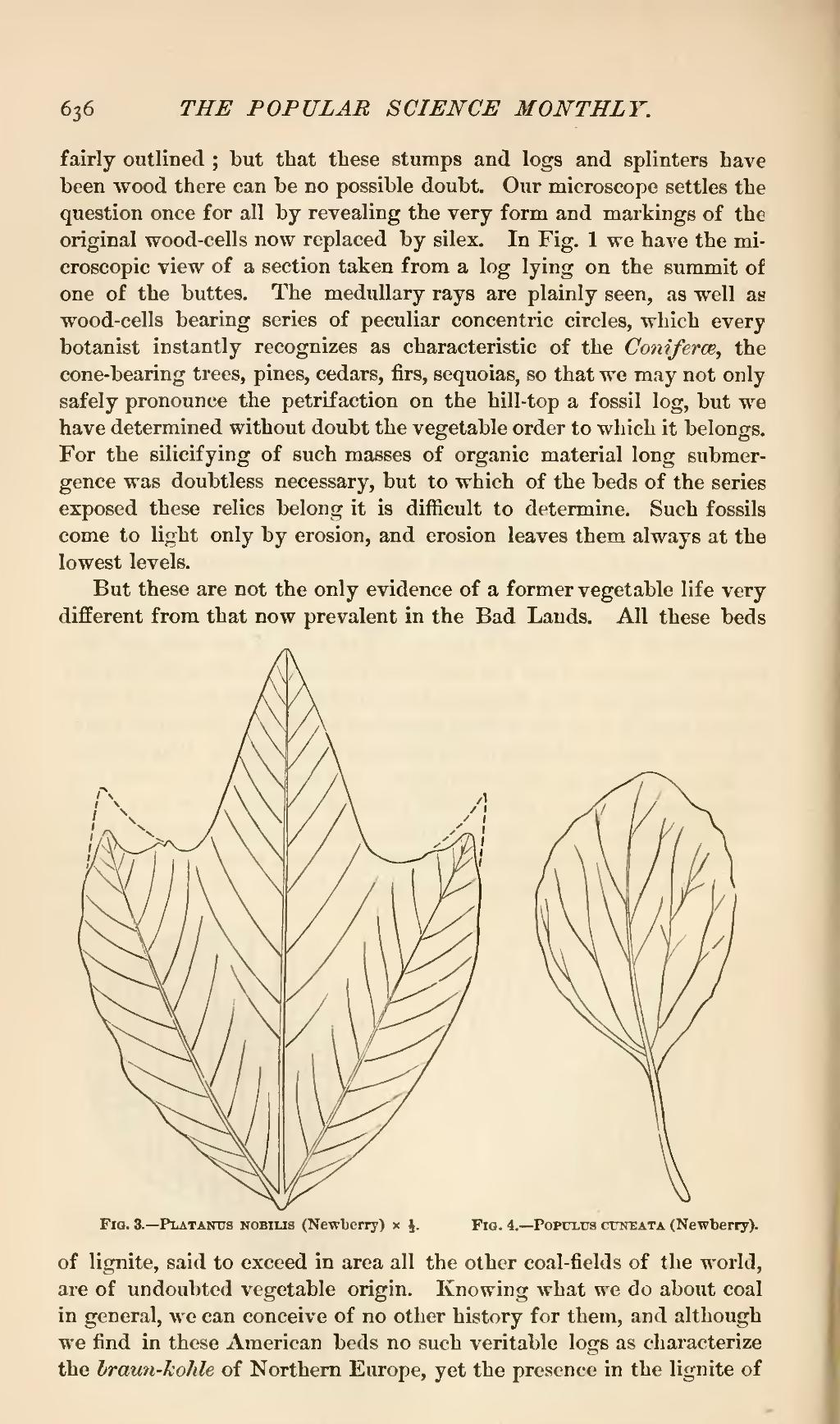fairly outlined; but that these stumps and logs and splinters have been wood there can be no possible doubt. Our microscope settles the question once for all by revealing the very form and markings of the original wood-cells now replaced by silex. In Fig. 1 we have the microscopic view of a section taken from a log lying on the summit of one of the buttes. The medullary rays are plainly seen, as well as wood-cells bearing series of peculiar concentric circles, which every botanist instantly recognizes as characteristic of the Coniferæ, the cone-bearing trees, pines, cedars, firs, sequoias, so that we may not only safely pronounce the petrifaction on the hill-top a fossil log, but we have determined without doubt the vegetable order to which it belongs. For the silicifying of such masses of organic material long submergence was doubtless necessary, but to which of the beds of the series exposed these relics belong it is difficult to determine. Such fossils come to light only by erosion, and erosion leaves them always at the lowest levels.
But these are not the only evidence of a former vegetable life very different from that now prevalent in the Bad Lands. All these beds

| Fig. 3.—Platanus nobilis (Newberry) x 1⁄2 | Fig. 4.—Populous cuneata (Newberry). |
of lignite, said to exceed in area all the other coal-fields of the world, are of undoubted vegetable origin. Knowing what we do about coal in general, we can conceive of no other history for them, and although we find in these American beds no such veritable logs as characterize the braun-kohle of Northern Europe, yet the presence in the lignite of
